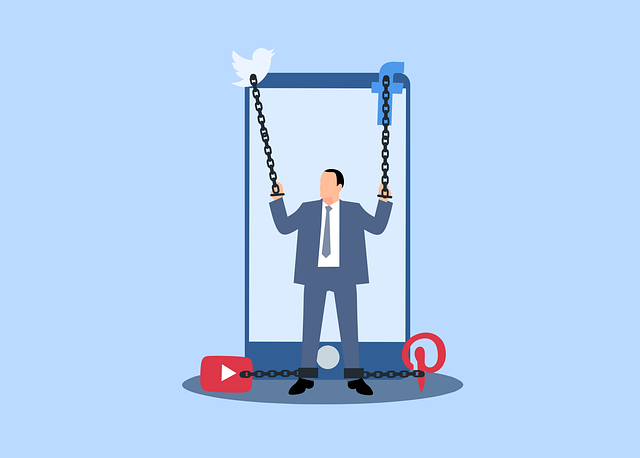Burnout among healthcare providers is a growing concern impacting both individual well-being and patient care quality. Driven by stressful work environments like long hours and heavy workloads, burnout manifests as emotional exhaustion, depersonalization, and reduced personal accomplishment. Effective interventions include Cognitive Behavioral Therapy (CBT) for stress management, stigma reduction efforts, and robust mental health risk planning. A supportive work environment with staff support programs, open communication, and work-life balance is crucial. Integrating crisis intervention guidance and educational opportunities focused on CBT equips healthcare providers with coping mechanisms and resilience-building techniques, preventing burnout and enhancing patient care, especially among young adults.
Healthcare provider burnout is a growing concern, affecting millions worldwide. This article explores comprehensive strategies to prevent and mitigate burnout among healthcare professionals, focusing on young adults. We delve into the root causes and symptoms of burnout, highlighting the power of cognitive behavioral therapy (CBT) as an effective prevention tool. Additionally, we provide organizational strategies for creating supportive work environments and essential self-care practices, emphasizing mental health prioritization for resilient and thriving healthcare workers.
- Understanding Burnout in Healthcare Providers: Causes and Symptoms
- Cognitive Behavioral Therapy (CBT) as a Prevention Tool for Young Adults
- Creating a Supportive Work Environment: Strategies for Organizations
- Self-Care Practices for Healthcare Workers: Prioritizing Mental Health
Understanding Burnout in Healthcare Providers: Causes and Symptoms

Burnout among healthcare providers is a growing concern, impacting both individual well-being and patient care quality. It manifests as a state of emotional exhaustion, depersonalization, and reduced personal accomplishment, often stemming from prolonged exposure to stressful work environments. In the fast-paced world of healthcare, long working hours, heavy workloads, and high-pressure situations contribute significantly to this issue, affecting not only physicians and nurses but also other essential workers.
The symptoms of burnout can range from physical and emotional exhaustion to increased cynicism towards patients and colleagues. Healthcare providers may experience difficulty concentrating, reduced motivation, and even mental illness such as depression or anxiety. Addressing these issues requires a multifaceted approach, with therapy for young adults, particularly cognitive behavioral therapy (CBT), emerging as an effective tool in managing stress and promoting emotional regulation. Additionally, stigma reduction efforts and robust risk management planning for mental health professionals are crucial to fostering healthier work environments that prioritize both physical and mental well-being.
Cognitive Behavioral Therapy (CBT) as a Prevention Tool for Young Adults

Cognitive Behavioral Therapy (CBT) has emerged as a potent tool in preventing burnout among young adults working in healthcare. This form of therapy focuses on identifying and changing negative thought patterns and behaviors, which can be particularly beneficial for addressing the unique challenges faced by this demographic. By targeting underlying cognitive distortions, CBT equips young adults with effective coping strategies to manage stress, enhance resilience, and improve overall well-being.
Incorporating self-awareness exercises and compassion cultivation practices into CBT sessions further strengthens its preventive capabilities. These techniques foster emotional intelligence, enabling individuals to recognize and regulate their emotions more effectively. This increased self-awareness can help young adults navigate the demanding healthcare environment with greater clarity, reducing the risk of burnout and promoting long-term career satisfaction.
Creating a Supportive Work Environment: Strategies for Organizations

Creating a supportive work environment is a crucial component of burnout prevention strategies for healthcare providers. Organizations play a pivotal role in fostering a culture that values and prioritizes employee well-being. This can be achieved through various initiatives, such as implementing regular staff support programs, encouraging open communication channels, and promoting a healthy work-life balance. One effective approach is integrating crisis intervention guidance into the organizational structure, ensuring professionals have access to resources for emotional healing processes when facing challenging situations.
Additionally, providing educational opportunities focused on burnout prevention can empower healthcare providers with coping mechanisms and resilience-building techniques. Cognitive Behavioral Therapy (CBT), for instance, has proven beneficial in therapy for young adults dealing with stress and anxiety. By offering workshops or training sessions that introduce CBT principles, organizations can equip their staff with tools to manage workload pressures and maintain mental health. Such proactive measures contribute to a more engaged and satisfied workforce, ultimately enhancing patient care.
Self-Care Practices for Healthcare Workers: Prioritizing Mental Health

Healthcare workers often put their patients’ well-being before their own, leading to increased stress and potential burnout. Prioritizing mental health is a crucial step in preventing this. Self-care practices such as therapy, whether traditional talk therapy or specialized cognitive behavioral therapy (CBT), can help healthcare professionals process complex emotions and manage stress levels effectively.
Incorporating cultural sensitivity in mental healthcare practice is essential to ensuring that workers from diverse backgrounds receive support tailored to their unique needs. Additionally, depression prevention strategies and stress management workshops organized by the workplace can significantly contribute to creating a healthier work environment. These initiatives promote open dialogue about mental health challenges and offer practical tools for coping, fostering a culture of resilience among healthcare providers.
Healthcare provider burnout is a pressing issue, but with the right strategies, it can be mitigated. By understanding the causes and symptoms of burnout, integrating cognitive behavioral therapy (CBT) as a prevention tool for young adults, fostering supportive work environments at organizations, and encouraging self-care practices prioritizing mental health, we can create a more sustainable and caring healthcare system. These comprehensive approaches ensure that healthcare workers are equipped to handle their demanding roles while maintaining well-being in the long term.













